When people blow in a dog’s face, it often triggers an intriguing response: the dog may start to lick. This behavior can seem peculiar to us, but to understand the canine perspective, we need to consider their sensory world and social instincts. Dogs experience the world largely through their keen sense of smell and taste, and when a sudden rush of air hits their nose, it can be startling or irritating. The act of licking can be a natural reflex to this sensation, akin to how humans might instinctively wipe something off their face.
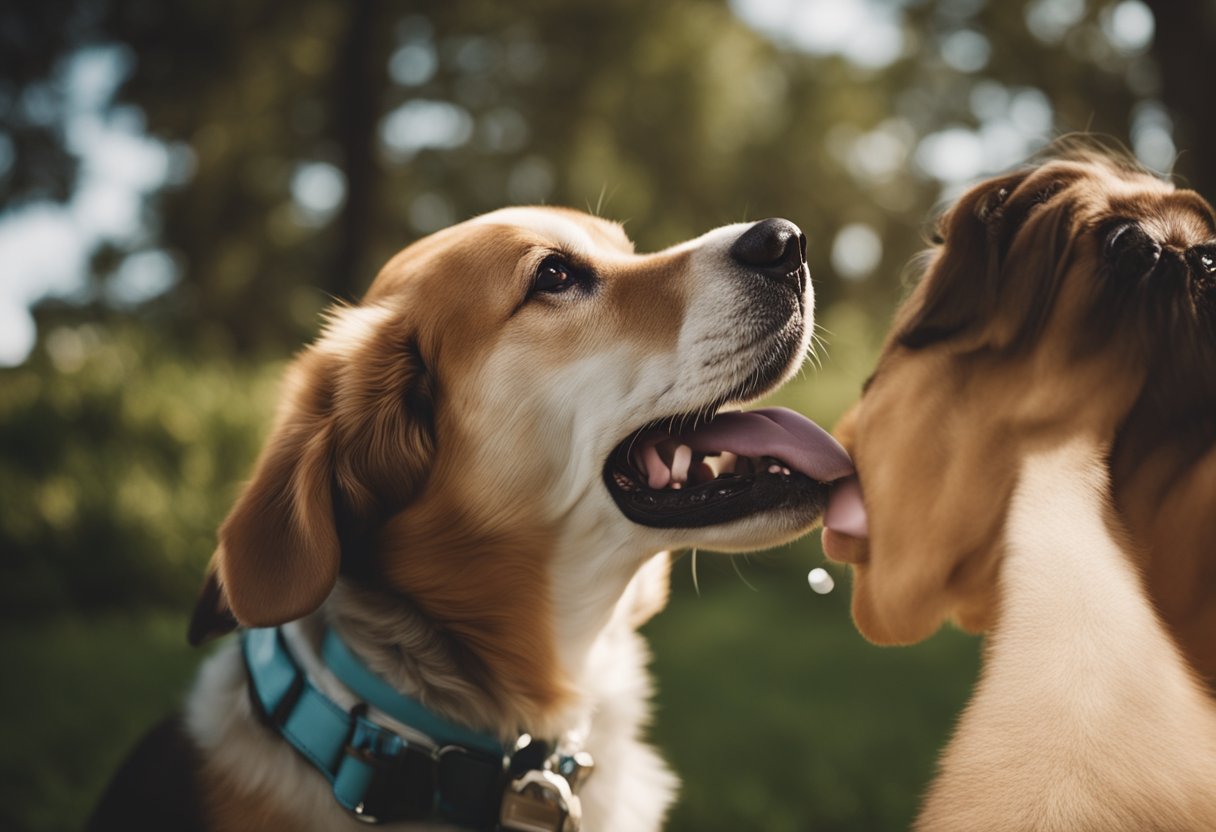
The reason behind a dog’s lick in response to being blown on can also be rooted in their behavior patterns. Licking is a fundamental part of a dog’s repertoire of social gestures. From early puppyhood, dogs learn to lick their mothers for grooming and to stimulate the regurgitation of food. As they mature, they continue to use licking as a way to communicate and show affection. When a human blows in their face, some dogs may interpret it as a form of interaction, replying with a lick as if to say, “I recognize this social cue.”
Key Takeaways
- Dogs may lick when blown on as an instinctive reaction to the sensation on their nose.
- Licking is deeply ingrained in canine behavior, often associated with communication and affection.
- Understanding and appropriately responding to a dog’s licking is important for fostering a healthy relationship.
Understanding Canine Behavior
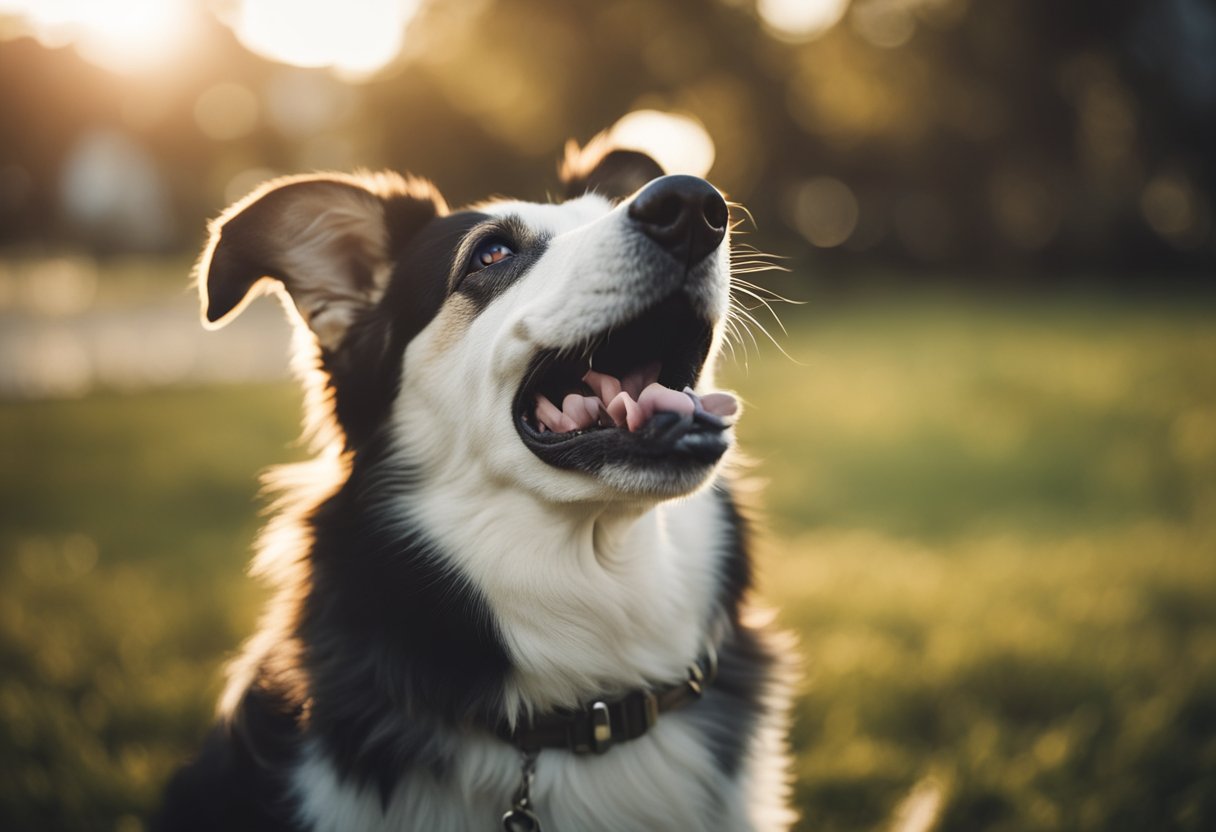
Dogs display a range of behaviors that can be perplexing to humans. One such behavior is licking when someone blows in their face. To interpret this action, it’s crucial to consider canine instincts and their evolutionary origins from wild canids.
Instincts: Licking is an instinctual behavior that serves various purposes. In wild canids, pups lick the faces of adult dogs to stimulate them to regurgitate food. While domestic dogs do not need this behavior for feeding, the instinct persists.
Communication: Dogs use licking as a way to communicate. It is an appeasement gesture symbolizing submission or social deference within their pack. When a dog licks a human’s face after being blown on, it may be attempting to communicate using this instinct-derived behavior.
- Licking in response to blowing: The sensation of air on a dog’s face might startle or confuse them. Licking can be a way to explore the sensation or to display their uncertainty in a gentle, appeasing manner.
Reasons Behind the Behavior
- Curiosity: Dogs explore the world with their mouths.
- Discomfort: The sensation of air might dry their nose, triggering a lick to remoisturize.
- Communication: Licking can be a sign of affection or a submissive gesture.
Understanding these behaviors is integral to fostering a harmonious relationship between a dog and its human companions. Recognizing that such actions are rooted in a dog’s natural instincts helps explain why they might respond to certain stimuli, like blowing in their face, with a lick.
Reasons Dogs Lick Human Faces
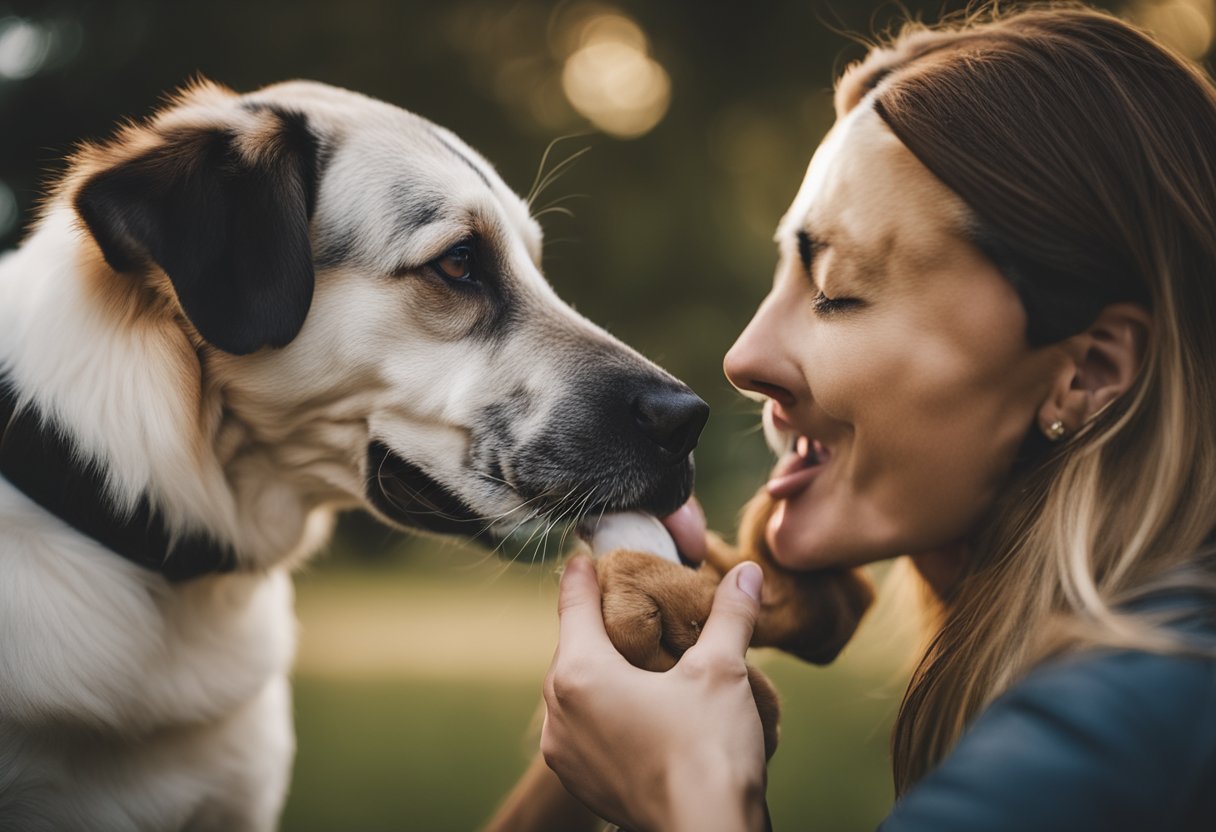
When a dog licks a human face, it’s often a multifaceted behavior that encompasses affection, communication, and natural instincts.
Expression of Affection
Dogs often lick faces as a sign of affection. This behavior mimics the nurturing actions of a mother dog who licks her puppies for both clean-up and comfort. When a dog licks your face, it may be expressing love and a sense of bonding.
Taste and Attraction to Scents
The human skin secretes oils and sweats that have taste and salt which can be appealing to a dog. Dogs have a keen sense of smell and may be attracted to the scents on a person’s face, leading to a face lick.
Seeking Attention and Interaction
Licking can be a dog’s way to seek attention. They learn that face licking often leads to interaction, whether it’s petting or play. This behavior can be reinforced with positive reinforcement if the reaction they receive is rewarding.
Communication and Respect
Face licking can be related to social behavior where a dog shows respect or social deference. In some cases, licking is a way for dogs to communicate their understanding of social hierarchies.
Anxiety and Stress-Related Behavior
For some dogs, licking is a coping mechanism for anxiety or stress, including separation anxiety. Licking may trigger the release of endorphins which can calm the dog.
Grooming and Caring Instinct
Just as they would with their pack, dogs may lick faces as part of a grooming ritual, showing care and affection. This instinctual behavior highlights the care dogs extend to their loved ones.
Exploration and Learning
Especially for puppies, licking is a way of exploring the world. They learn about their environment and their human companions through this sensory interaction. Lick mats and interactive puzzles can encourage this exploration in a more suitable way during trick training.
Health Considerations Around Licking
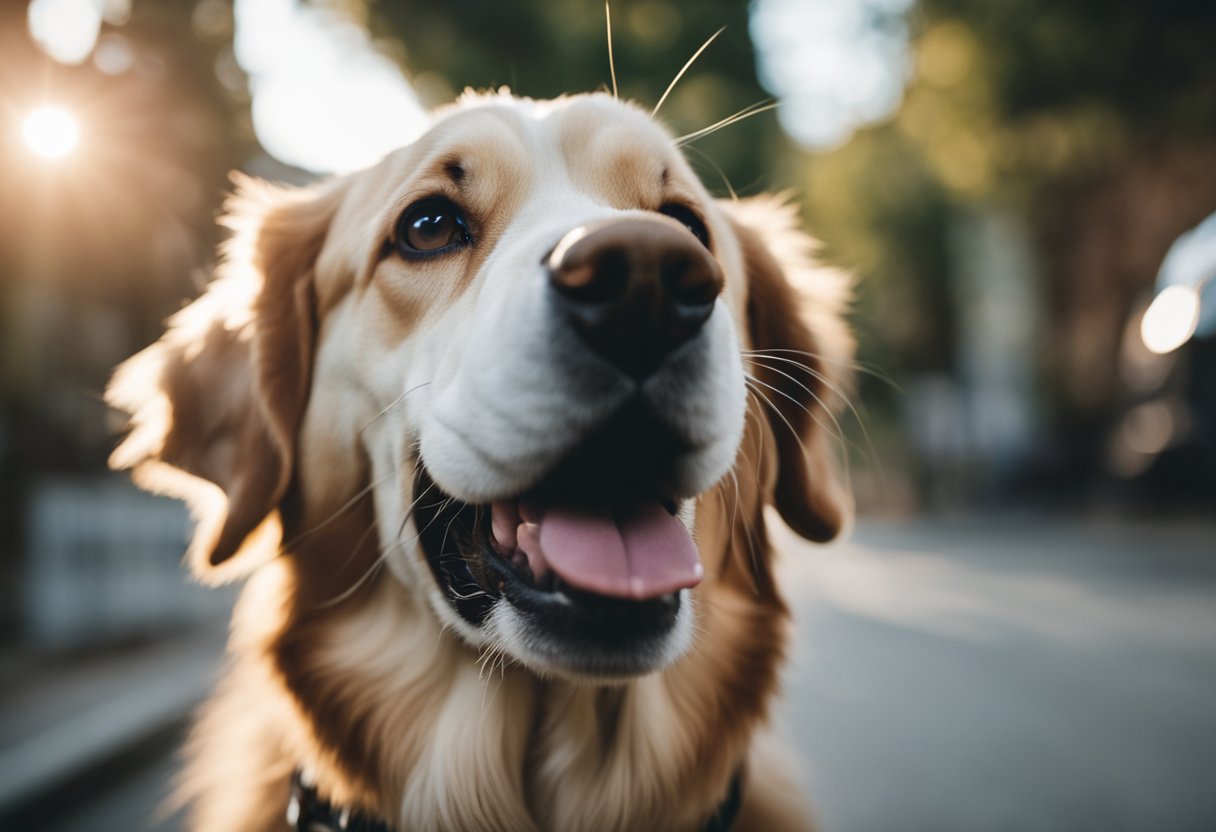
When it comes to dogs licking—whether it be their own wounds, their owner’s skin, or reacting to being blown in the face—it’s important to consider the health implications. Licking can offer both healing benefits and potential risks, such as infection and the spread of bacteria.
Dogs Licking Wounds and Infections
Dogs naturally lick their wounds as a primary response. While dog saliva contains bacteria that could potentially ward off infection, it’s a common misconception that it has significant antibacterial properties. Excessive licking of an open wound can introduce dirt and delay healing, leading to infections, especially in immunocompromised pets with a compromised immune system. If a dog exhibits persistent licking behavior, a consultation with a veterinarian is advised to rule out underlying health issues.
Dog Saliva and Human Health
Dog saliva comes into contact with humans frequently, especially when a dog licks a person’s face or hands. Although the risk is low, there are instances where dog saliva can cause health-related issues, particularly in humans with allergies or immunocompromised systems. Pregnant women, young children, the elderly, and anyone with a compromised immune system should take extra precautions, as dog saliva can harbor pathogenic bacteria capable of causing illness.
Assessing Problematic Licking
Persistent or problematic licking, both of themselves or others, may indicate underlying issues such as pain, anxiety, or a behavioral issue. It is important to distinguish between normal grooming and obsessive-compulsive behaviors. In the latter case, seeking guidance from a veterinary behaviorist is crucial to address and manage the behavior effectively. Continuous licking might lead to secondary infections, compounding any pre-existing conditions.
Responding to Your Dog’s Licking
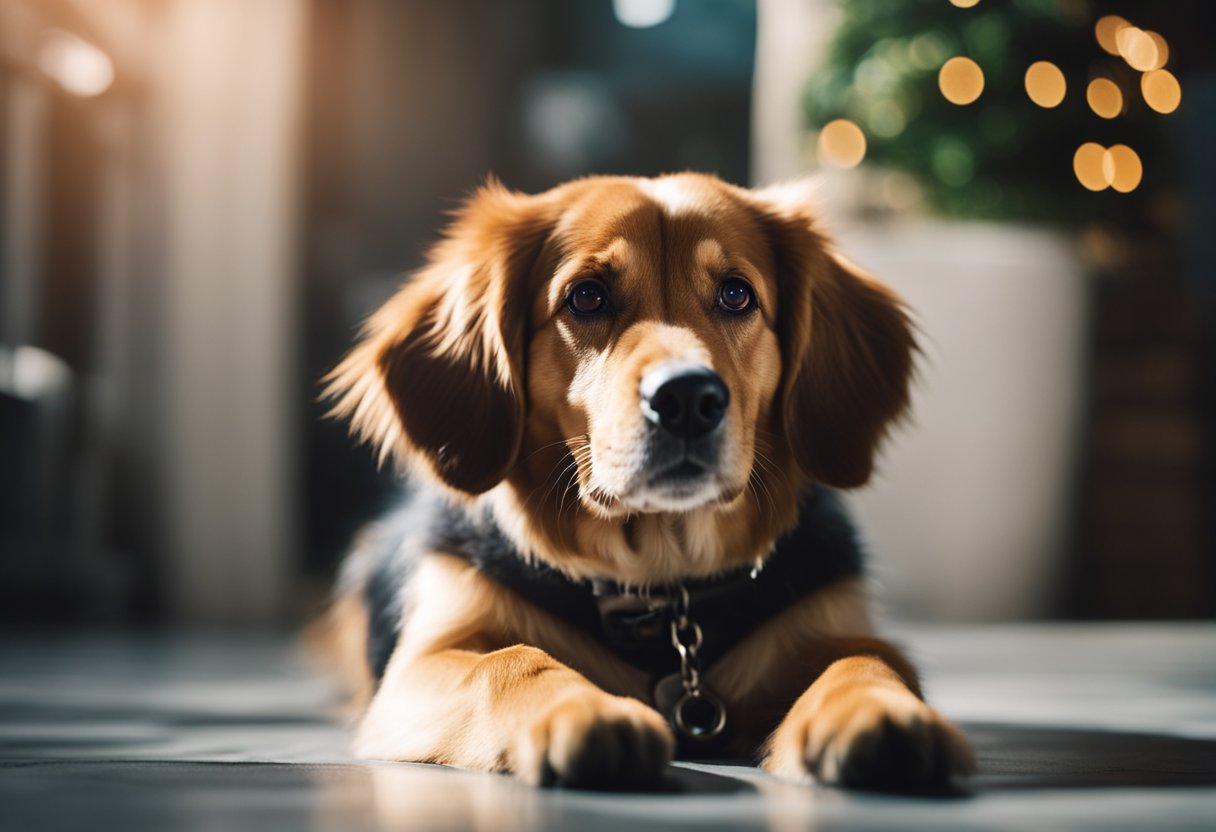
Understanding and managing your dog’s licking behavior involves recognizing the difference between affectionate licks and excessive licking that may signal underlying issues. Respond to your dog’s licking in a way that promotes positive behavior while also addressing any potential problems.
Encouraging Appropriate Licking
Positive reinforcement is key when it comes to encouraging the right kind of licking. Reward your dog with affection and treats when they offer a gentle lick as a greeting or sign of love. This reinforces that mild, calm licking is acceptable and appreciated. Consistently recognize and reward the behavior you want to encourage to strengthen these boundaries.
Redirecting Undesired Licking
When your dog engages in unwanted licking, it’s imperative to redirect their behavior without punishment. Offer them an alternative, like lick mats or chew toys, to keep their mouth busy. Training sessions that involve commands like “sit” or “stay” can also refocus their attention and energy. Incorporating regular exercise into their routine helps curb anxiety, which can be a root cause of obsessive licking.
When to Seek Professional Advice
If licking persists despite consistent redirection and reinforcement, it might be a sign of a behavioral issue. In such cases, consulting a veterinary behaviorist is crucial. They can assess whether the problem stems from anxiety or another underlying condition. A professional can also provide tailored guidance and strategies to train and help your dog overcome excessive licking.
